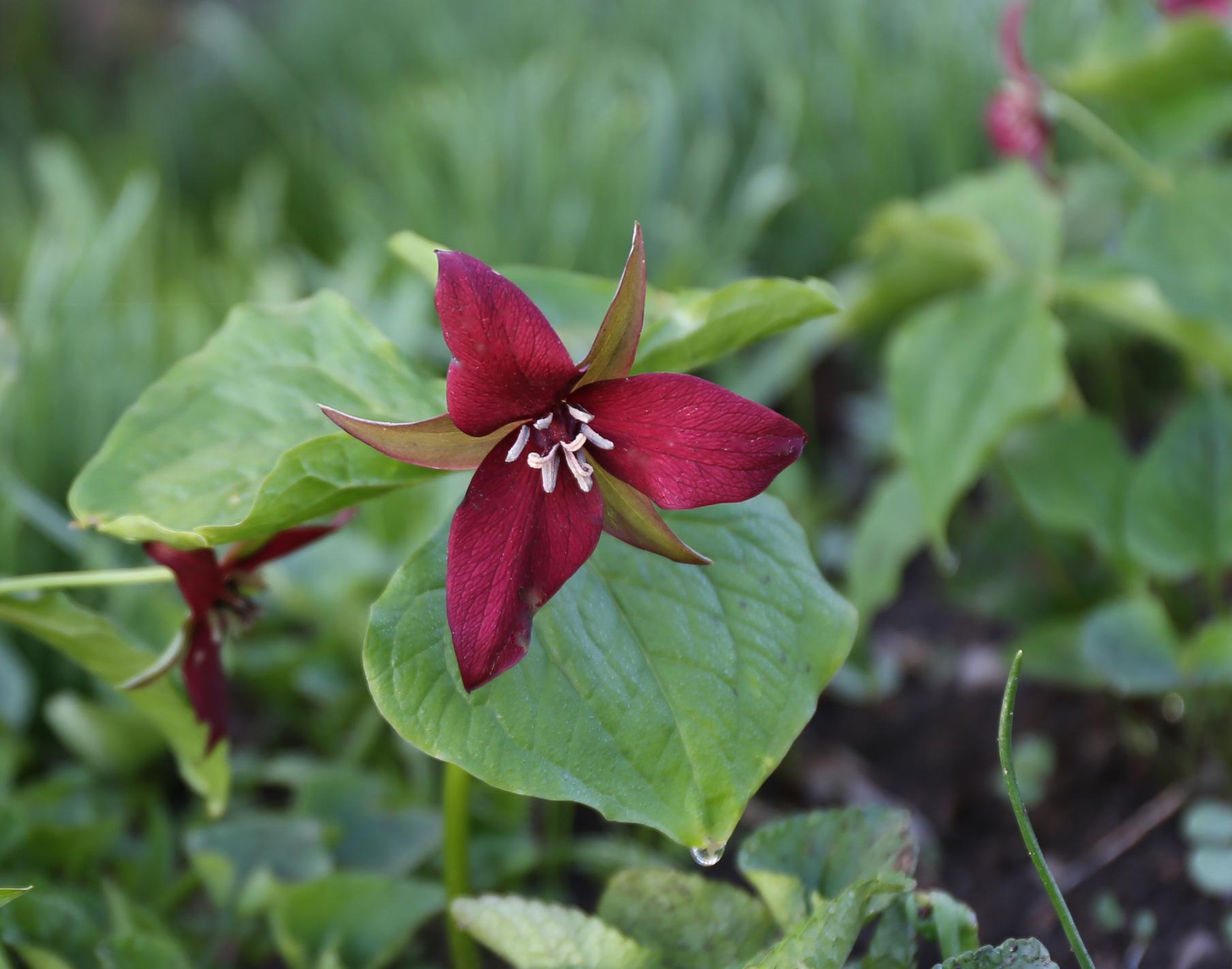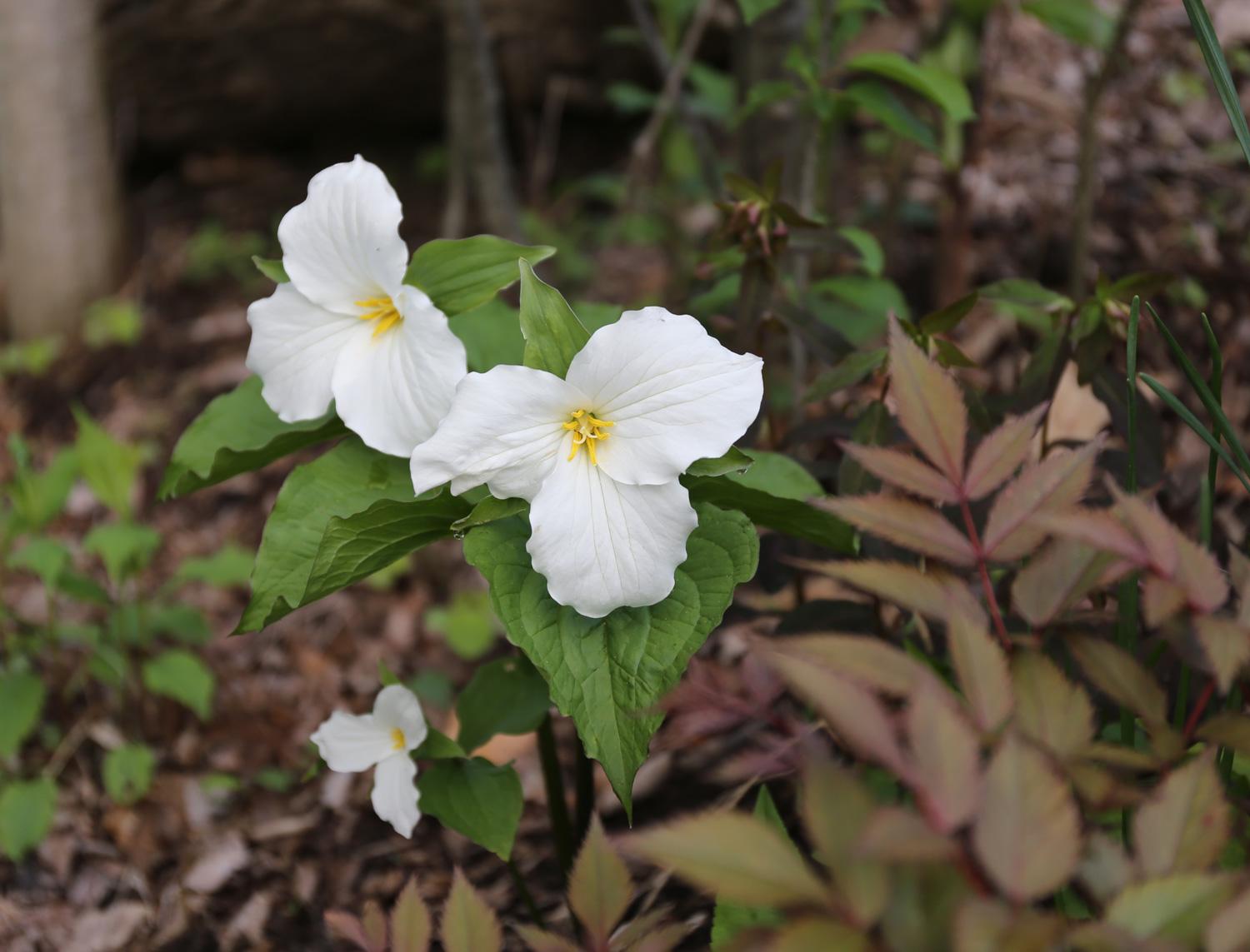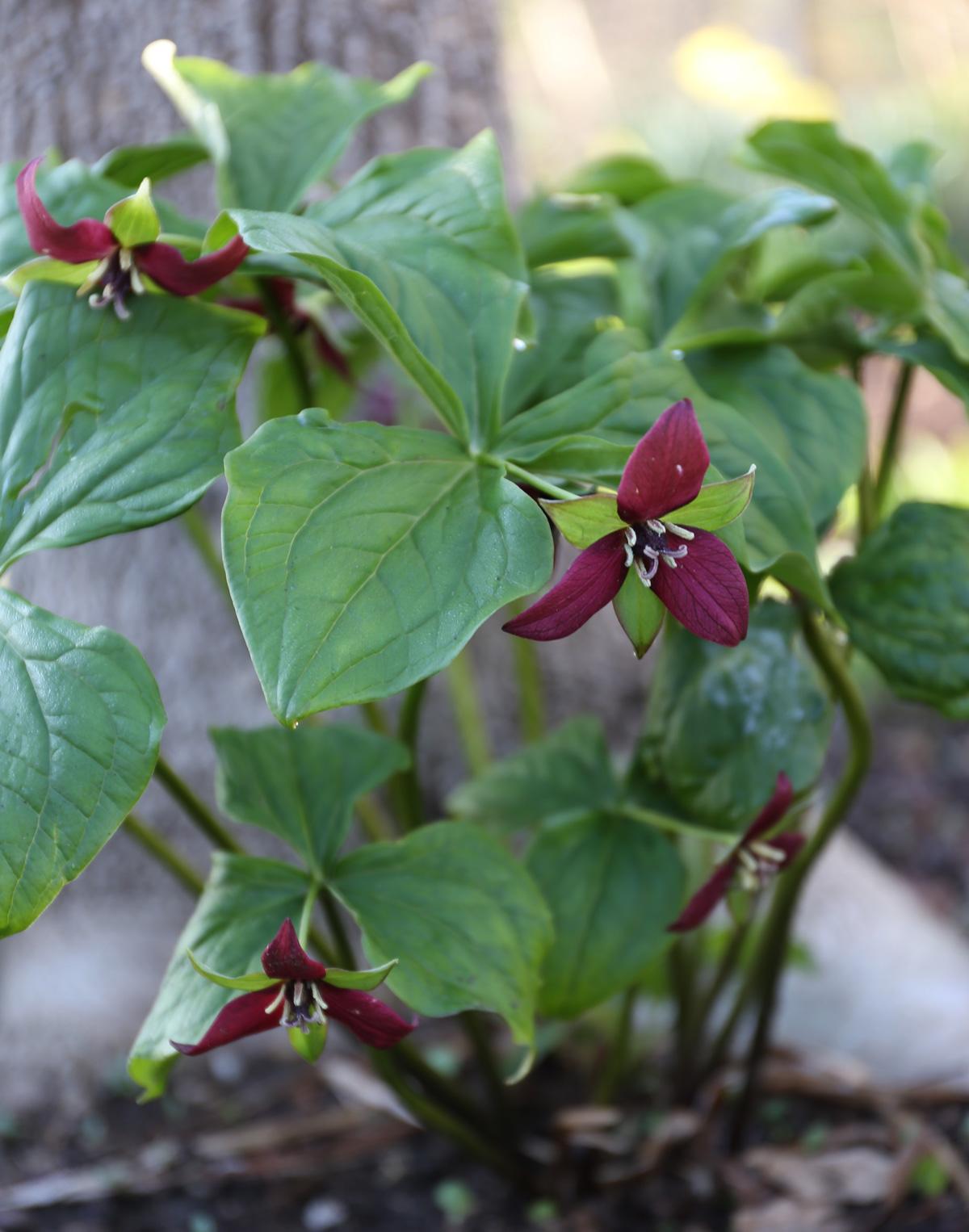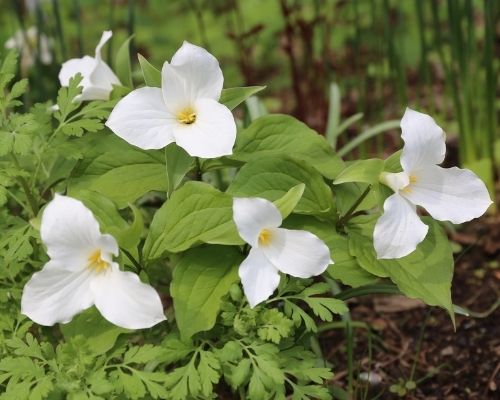Your Guide to Planning, Planting, and Growing Trillium
Trilliums are spring-blooming wildflowers that grow naturally in woodlands throughout much of the United States and Canada. These distinctive plants are easy to recognize. They have a whorl of three leaves, topped by a single flower that has three petals and three sepals.
What to Know About Trillium
Trilliums grow from rhizomes, which are fleshy, underground stems. It may take more than one growing season for newly planted trillium to settle in and begin flowering. Once established, they are very long-lived and will usually multiply.
Some trillium species are endangered. Always purchase from a reputable source that can guarantee the plants were not collected in the wild. All trillium sold by Longfield Gardens are nursery propagated.

Plan for Success
Sun and Shade: In the wild, trilliums are usually found growing in the dappled shade beneath deciduous trees and shrubs. For the plants to thrive, they need plenty of light during the spring. After flowering, the foliage will continue growing for several months and then die back to the ground.
Soil Conditions: Trillium should be planted in soil that’s rich in organic matter. It should be well drained yet consistently moist. Mulching the area with shredded leaves will improve the soil and help retain moisture.
Hardiness: Hardiness varies by species. Some trilliums are winter hardy in growing zones 4-8, while others are more sensitive to cold and only hardy in zones 6-8.

Types of Trillium
Large-Flowered White Trillium (Trillium grandiflorum). Native to the eastern half of the U.S. and Canada. Snow-white flowers with very large petals. The plants grow 12-20” tall with broadly-oval leaves that display prominent veining. Flowers usually turn pale pink as they age. Plantings can spread over time and cover large areas of the forest floor. Prefers neutral to slightly alkaline soil. Hardy in zones 4-7.
Red Trillium (Trillium erectum). Native to the eastern half of the U.S and Canada. The dark red flowers have an unpleasant odor that attracts pollinating flies. Plants need at least a half day of bright sun in spring. Flowers are followed by berry-like fruits. Established clumps may be divided in mid to late summer. Red trillium prefers neutral to acidic soils. Hardy in zones 3-6.

How to Grow Trillium
For best success, start with trillium species that are native to your region. These will be well adapted to the growing conditions in your area.
North: Trillium erectum (red trillium, stinking Benjamin); Trillium grandiflorum (white trillium)
Midwest: Trillium flexipes (bent trillium, white wake-robin); Trillium grandiflorum
South: Trillum pusillum (dwarf wake-robin); Trillium vaseyi (sweet Beth)
West: Trillium chloropetalum (giant trillium); Trillium ovatum (western white trillium)
Good planting companions for trillium include hepatica, epimedium, erythroniums, primula, cyclamen, dicentra, sanguinaria and arisaema. Spring-flowering bulbs such as scilla, chionodoxa and anemones also grow well with trilliums.
Trilliums are rarely troubled by diseases or pests but will not tolerate damage to their flowers or foliage. Unfortunately, deer find trillium tasty. If the plants are heavily browsed, they will die out within a couple years.

Caring for Trillium After They Flower
Trillium are long-lived plants and there's usually no need for them to be divided. If you want to create more plants, the best time to divide the clumps is during the summer or fall when they are dormant. Gently lift the plants and separate the rhizomes. Replant rhizomes 2-3 inches below the soil surface. Water deeply if the weather is dry. Newly divided plants may take a year or more to recover and begin blooming again.
See our selection of trillium HERE.
Learn about other shade loving plants:
Choosing Plants for Sun or Shade
10 Easy Perennials for Shady Gardens


